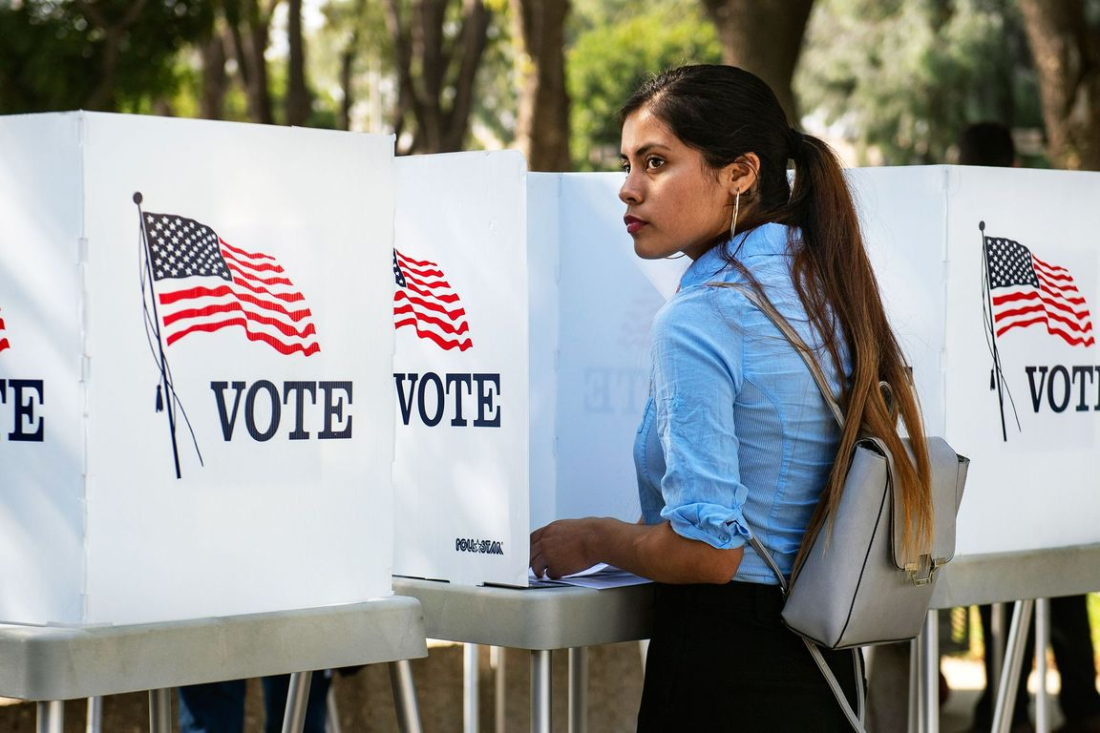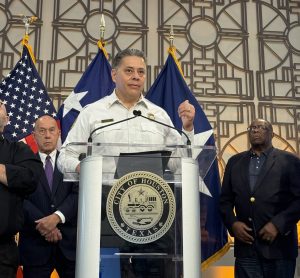
In a projection unveiled by the National Association of Latino Elected and Appointed Officials (NALEO) on Wednesday, an estimated 17.5 million Latinos are anticipated to cast their votes in the upcoming November elections. This figure marks a notable 6.5% increase from the 2020 turnout and holds the potential to wield significant influence in pivotal battleground states.
The rise in projected Latino voter participation underscores the expanding pool of eligible Hispanic voters, provided concerted efforts are made to ensure their registration.
During a press conference, Arturo Vargas, CEO of NALEO, emphasized, “The takeaway here is that if we are able to get Latinos registered to vote, they will turn out in elections.”
Dorian Caal, NALEO’s director of civic engagement research, highlighted that in the 2020 elections, a remarkable 88% of registered Latino voters exercised their voting rights.
NALEO anticipates that Latinos will comprise more than 1 in 10 voters in November, constituting an 11% share—a notable 20.5% surge from 2016.
Noteworthy increases in Latino voter turnout are projected in several states compared to 2020 figures, including California (6.1%), Florida (13.8%), Nevada (15.5%), and New York (12.4%). Conversely, states such as Arizona, Georgia, New Jersey, and Texas are anticipated to maintain turnout rates similar to those recorded in 2020.
NALEO’s projections are grounded in historical voting patterns and demographic trends.
Reflecting on the heightened enthusiasm witnessed in the 2020 election cycle, Vargas remarked, “The turnout rate for all voters nationally was 92%. And for Latinos, 88% of those registered to vote voted.” He highlighted the diminishing gap between Hispanic and non-Hispanic voter turnout, largely attributed to compelling factors driving voter engagement, including concerns over healthcare costs and social justice issues following the death of George Floyd.
Moreover, increased outreach efforts by campaigns and advocacy groups contributed to bolstering Hispanic voter participation in 2020.
With Hispanics comprising the largest racial and ethnic minority group in the United States, totaling 63.7 million individuals according to the 2022 Census, efforts to ensure their registration and engagement in the electoral process are increasingly pivotal.
Caal emphasized, “The challenge is getting Latinos registered… because the number of Latinos eligible to vote is growing much faster than any other population.” This underscores the imperative of proactive measures to harness the burgeoning Latino electorate’s potential impact on shaping the nation’s electoral landscape.










